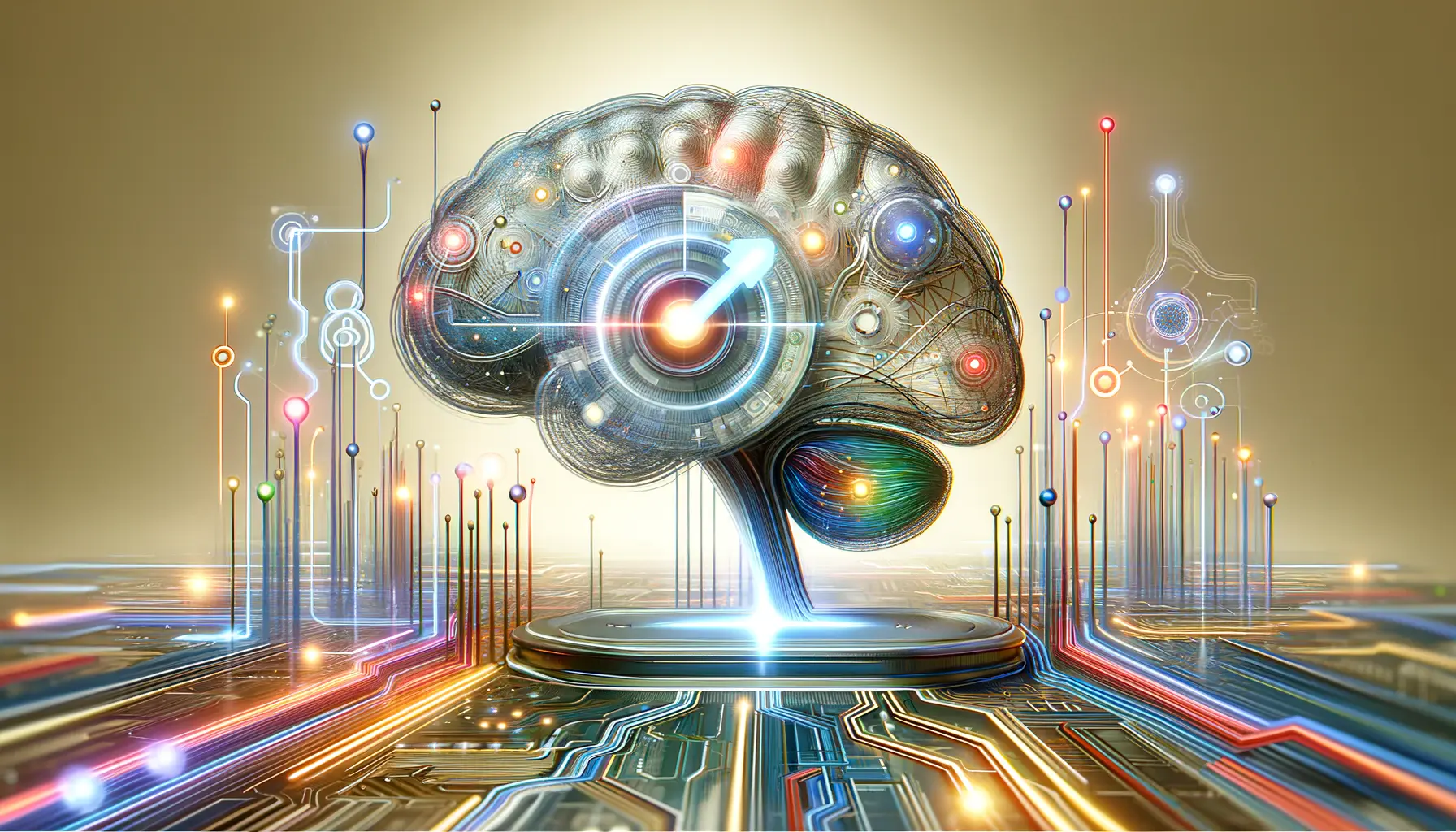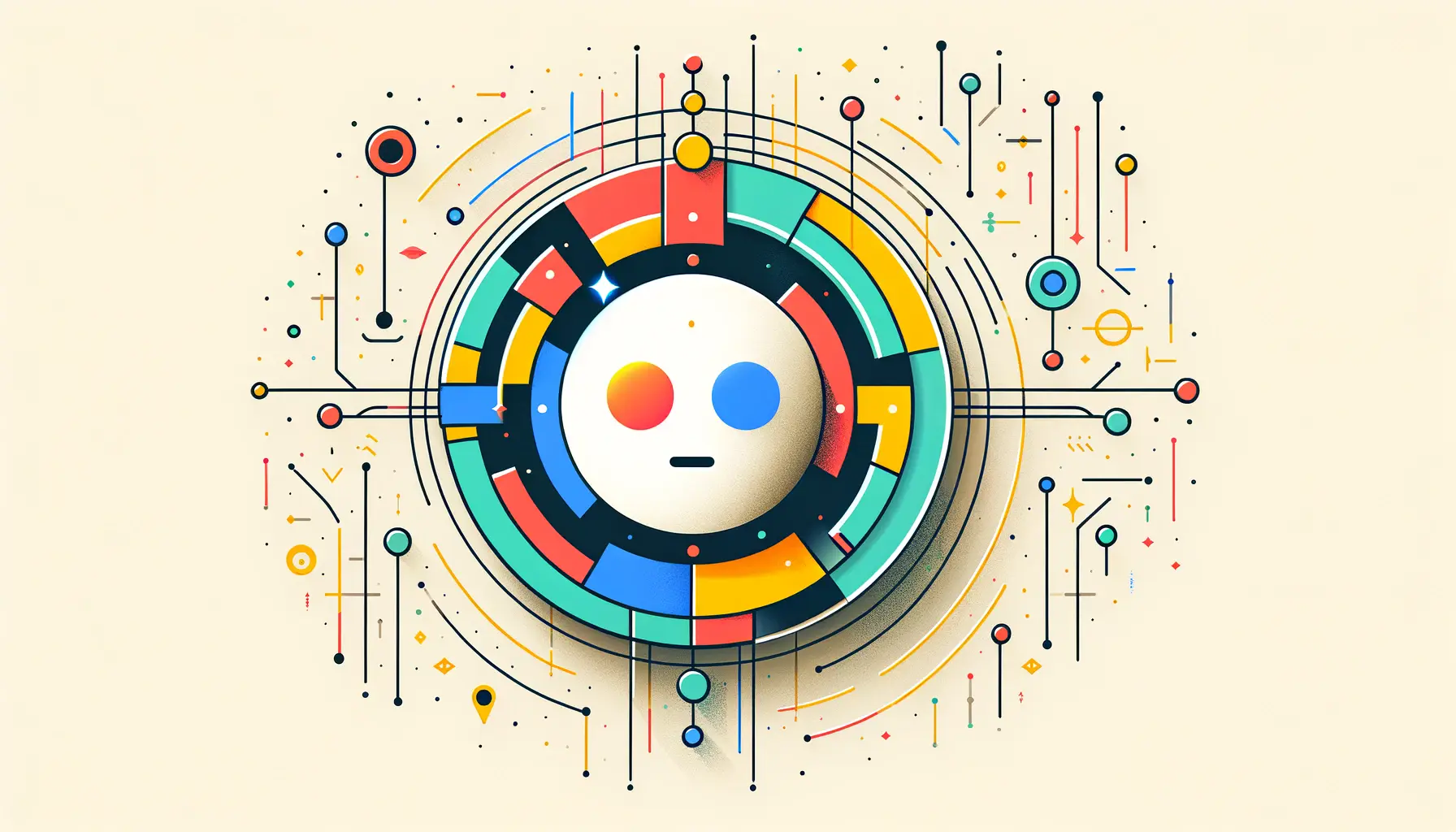In today’s digital age, the sheer volume of information available online can be overwhelming.
With millions of articles, blogs, and posts being published every day, finding relevant and accurate information has become a daunting task for many.
This phenomenon, known as content overload, has prompted tech giants to seek innovative solutions to help users navigate the vast seas of digital content more efficiently.
Google’s Bard, an advanced AI-driven platform, emerges as a beacon of hope in this context, promising to revolutionize how we interact with and consume online content.
Google’s Bard leverages cutting-edge artificial intelligence to sift through the internet’s expansive content, delivering precise, relevant, and timely information to users.
By understanding and interpreting user queries in a nuanced manner, Bard aims to cut through the noise, offering solutions that are tailored to individual needs and preferences.
This article delves into how Bard stands as a solution to content overload, exploring its capabilities, benefits, and the impact it has on content consumption and discovery.
Solution: Content Overload
The Challenge of Excess Information
The digital revolution has democratized information, making it accessible to anyone with internet access.
However, this accessibility comes with the challenge of excess.
Users often find themselves lost in a maze of irrelevant, outdated, or simply too much information.
The consequence is not just frustration but also the inability to make informed decisions or learn effectively.
Content overload affects productivity, mental health, and the overall quality of the digital experience.
Recognizing the signs of content overload is crucial for understanding its impact.
Symptoms include feeling overwhelmed by the amount of information available, difficulty in distinguishing credible sources, and a general sense of being inundated whenever online.
These challenges highlight the need for innovative solutions that can streamline content discovery and ensure the relevance and quality of information presented to users.
Google’s Bard: A Beacon in the Information Deluge
Google’s Bard is designed as a direct response to the issue of content overload.
By employing sophisticated AI algorithms, Bard analyzes vast amounts of data across the web to present users with information that is not only relevant but also concise and trustworthy.
This AI-driven approach to filtering and presenting information represents a significant leap forward in managing content overload.
Bard’s ability to understand context, nuance, and the user’s intent allows for a more personalized and efficient search experience, making it easier to find the needle in the digital haystack.
The introduction of Bard into the digital landscape is a testament to Google’s commitment to enhancing user experience and accessibility.
By providing a solution that addresses the core challenges of content overload, Bard not only improves how we access information but also the quality of the content we consume.
This shift towards more intelligent and user-centric information retrieval mechanisms marks a pivotal moment in the ongoing battle against the deluge of digital content.
Google’s Bard represents a significant advancement in combating content overload by leveraging AI to deliver personalized, relevant, and concise information.
Mechanics of Google Bard
At the heart of Google Bard’s effectiveness in addressing content overload is its sophisticated AI and machine learning algorithms.
These technologies enable Bard to understand, interpret, and process user queries in a way that goes beyond simple keyword matching.
Instead, Bard assesses the intent and context behind each query, allowing it to generate responses that are not only relevant but also tailored to the user’s specific needs.
AI and Machine Learning at Work
Google Bard’s AI is built upon a foundation of advanced machine learning models, including natural language processing (NLP) and natural language understanding (NLU).
These models enable Bard to parse and comprehend the nuances of human language, making it possible for the platform to engage in a more conversational and intuitive search experience.
By analyzing patterns, trends, and the semantic meaning of words, Bard can sift through the internet’s vast information repository to find the most accurate and relevant content.
The continuous learning aspect of Bard’s AI means that it becomes more efficient and effective over time.
As it interacts with users and processes more queries, it fine-tunes its algorithms to better understand and predict user needs.
This self-improving mechanism ensures that Bard remains at the cutting edge of AI-driven content discovery, adapting to the evolving digital landscape and user behaviors.
Personalization and Contextual Understanding
One of the key strengths of Google Bard is its ability to personalize the search experience.
By taking into account the user’s search history, preferences, and even the context of their current query, Bard can tailor its responses to match the user’s specific situation.
This level of personalization is achieved through sophisticated data analysis and machine learning techniques, which allow Bard to build a nuanced understanding of each user.
- User-Centric Search Results: Bard prioritizes content that aligns with the user’s past interactions and demonstrated interests, ensuring that the information presented is both relevant and engaging.
- Contextual Relevance: Understanding the context of a query allows Bard to deliver more precise answers, distinguishing between similar queries to provide the most appropriate response.
This combination of AI-driven analysis and personalization makes Google Bard a powerful tool in the fight against content overload.
By delivering content that is not only relevant but also tailored to the individual user, Bard significantly enhances the efficiency and satisfaction of the online search experience.
The integration of AI and machine learning enables Google Bard to offer a personalized and context-aware search experience, setting a new standard in information retrieval.
Benefits of Using Google Bard
Google Bard offers a multitude of benefits that address the core issues of content overload, transforming how users interact with online information.
Its AI-driven approach not only streamlines the search process but also enhances the quality of results, making information consumption more efficient and effective.
Below are key benefits that highlight Bard’s impact on managing digital content.
Enhanced Search Efficiency: Google Bard significantly reduces the time and effort required to find relevant information.
By understanding the intent behind queries, Bard can quickly sift through vast amounts of data to present the most pertinent results.
This efficiency is crucial in today’s fast-paced world, where time is often a scarce resource.
- Accuracy and Relevance: Bard’s advanced algorithms ensure that the information presented is accurate and highly relevant to the user’s query. This accuracy is vital for making informed decisions and gaining trustworthy insights.
- Personalized Experience: Bard tailors its responses based on the user’s search history and preferences, offering a personalized search experience that enhances content discovery and engagement.
Reducing Information Overload
One of Bard’s primary advantages is its ability to mitigate the effects of information overload.
By filtering out irrelevant, outdated, or low-quality content, Bard helps users focus on information that is truly valuable and relevant to their needs.
This selective approach to content retrieval is essential for maintaining a healthy and productive digital environment.
- Curated Content: Bard’s AI algorithms curate content that matches the user’s specific interests and needs, reducing the clutter of unnecessary information.
- Streamlined Information Consumption: With Bard, users can access concise summaries and key insights, making it easier to consume and understand complex information.
Supporting Informed Decision-Making
Access to accurate and relevant information is crucial for informed decision-making.
Google Bard plays a pivotal role in this process by ensuring that users have access to high-quality content that can inform their choices.
Whether it’s researching a product, understanding a complex topic, or exploring new ideas, Bard provides the information foundation necessary for making well-informed decisions.
- Comprehensive Insights: Bard offers comprehensive insights by drawing from a wide range of sources, ensuring users have a holistic understanding of the topic at hand.
- Up-to-Date Information: Leveraging Google’s vast index, Bard ensures that the information provided is current, reflecting the latest developments and trends.
The benefits of Google Bard extend beyond simple search enhancement.
By addressing the underlying challenges of content overload, Bard empowers users to navigate the digital landscape more effectively, making the vast world of online information more accessible and manageable.
Google Bard’s AI-driven capabilities offer a transformative solution to content overload, enhancing search efficiency, personalization, and the overall quality of online information.
Integrating Bard into Daily Searches
The integration of Google Bard into daily search activities marks a significant shift in how individuals and professionals access and utilize online information.
This transition towards an AI-enhanced search experience offers numerous advantages, streamlining workflows and enhancing productivity.
Understanding how to effectively incorporate Bard into daily searches can greatly amplify its benefits.
Adapting to Bard’s Capabilities: The first step in integrating Bard into daily searches is to familiarize oneself with its capabilities and features.
Bard’s strength lies in understanding natural language queries, allowing users to interact with it in a conversational manner.
This means moving away from traditional keyword-based searches to more nuanced and detailed queries that can leverage Bard’s advanced understanding of context and intent.
- Personalized Search Strategies: Users can develop personalized search strategies that make the most of Bard’s AI-driven personalization. By consistently using Bard for searches, it learns from your preferences and search history, tailoring its responses more accurately over time.
- Efficient Information Retrieval: Bard’s ability to quickly sift through vast amounts of information and present the most relevant results can significantly reduce the time spent on research. This efficiency is particularly beneficial for professionals and students who rely on timely and accurate information.
Enhancing Productivity and Learning
Incorporating Bard into daily searches not only streamlines the process of finding information but also enhances learning and productivity.
Bard’s concise summaries and ability to answer complex queries make it an invaluable tool for acquiring new knowledge and insights.
This can be especially useful for continuous learning, staying updated with the latest trends, and quickly understanding new topics.
- Targeted Learning: Bard can facilitate targeted learning by providing information that is directly relevant to the user’s current interests or needs, eliminating the distraction of unrelated content.
- Knowledge Expansion: By accessing a broader range of sources and perspectives, Bard helps users expand their knowledge base, encouraging a deeper understanding of subjects.
Optimizing Workflows
For professionals, integrating Bard into daily workflows can lead to significant improvements in efficiency and decision-making.
Bard can assist in various tasks, from market research and data analysis to content creation and problem-solving.
By automating the initial stages of information gathering, Bard allows professionals to focus on higher-level analysis and strategic planning.
- Streamlined Research: Bard’s ability to provide quick and relevant answers helps streamline the research process, saving valuable time and resources.
- Enhanced Decision-Making: With access to accurate and up-to-date information, Bard supports more informed and effective decision-making across different domains.
Integrating Google Bard into daily searches represents a forward leap in harnessing the power of AI for information retrieval.
By optimizing search strategies and embracing Bard’s capabilities, users can significantly enhance their online experience, making the vast expanse of the internet more navigable and useful.
Effectively integrating Bard into daily searches enhances efficiency, productivity, and the quality of information retrieval, marking a new era in digital literacy and access.
Challenges and Considerations
While Google Bard represents a significant advancement in combating content overload and enhancing the search experience, its implementation and use come with certain challenges and considerations.
Understanding these factors is crucial for maximizing the benefits of Bard while mitigating potential drawbacks.
Privacy and Data Security: One of the primary concerns surrounding the use of AI-driven tools like Bard is the handling of personal data.
Bard’s ability to personalize search results is based on analyzing user behavior and preferences, which involves collecting and processing vast amounts of data.
Ensuring the privacy and security of this data is paramount, as breaches or misuse could have serious implications for users.
- Transparency in Data Use: Users should be informed about how their data is being used and the measures in place to protect it. Transparency builds trust and helps users make informed decisions about their engagement with Bard.
- Adherence to Data Protection Regulations: Google must ensure that Bard complies with international data protection laws, such as GDPR in Europe, to safeguard user privacy and maintain regulatory compliance.
Accuracy and Bias in AI
Another challenge is ensuring the accuracy of the information Bard provides and addressing potential biases in its AI algorithms.
AI systems are only as good as the data they are trained on, and if this data contains biases, the AI’s outputs can be skewed.
This can lead to the reinforcement of stereotypes or the presentation of biased information as fact.
- Continuous Algorithm Improvement: Google must continuously work to improve Bard’s algorithms, ensuring they are accurate and free from biases. This involves regular audits and updates based on the latest research and ethical guidelines.
- Providing Diverse Perspectives: Bard should aim to present information from a variety of sources, offering users a balanced view and helping to counteract the spread of misinformation.
Adapting to Evolving User Needs
The digital landscape is constantly changing, with new types of content and ways of interacting with information emerging regularly.
Bard must be adaptable, capable of evolving to meet these changing needs and preferences.
This requires ongoing development and updates to ensure Bard remains relevant and effective as a tool for navigating content overload.
- Integration with New Technologies: As new technologies emerge, Bard should integrate with them to provide a seamless and enhanced user experience. This could include virtual reality, augmented reality, or new forms of social media.
- Responding to User Feedback: User feedback is invaluable for identifying areas for improvement. Google should actively seek and incorporate user input to refine Bard’s functionality and usability.
Addressing these challenges and considerations is essential for ensuring that Google Bard achieves its full potential as a solution for content overload.
By focusing on privacy, accuracy, bias mitigation, and adaptability, Bard can continue to provide a valuable service to users navigating the complex digital information landscape.
Ignoring the challenges and considerations associated with Bard’s use could undermine its effectiveness and user trust.
Future Directions for Google Bard
The development and deployment of Google Bard mark a significant milestone in the evolution of search technology and AI’s role in managing digital content.
However, the journey doesn’t end here.
The future of Bard and similar AI-driven platforms is ripe with possibilities, each promising to further transform our digital interactions and information consumption habits.
Exploring these future directions not only highlights the potential advancements in AI but also underscores the ongoing commitment to enhancing user experience in the face of ever-growing content overload.
Expansion of Bard’s Capabilities: Google is continuously working to enhance Bard’s functionality, aiming to make it more intuitive, versatile, and capable of handling a broader range of queries.
Future updates may include improved understanding of complex questions, the ability to process and summarize audio and video content, and enhanced personalization features that adapt to user preferences with even greater accuracy.
- Integration with Emerging Technologies: The integration of Bard with emerging technologies such as augmented reality (AR) and virtual reality (VR) could redefine how we interact with information. Imagine pointing your phone at a historical landmark and having Bard instantly provide a detailed history, or using VR to explore a topic in an immersive 3D environment.
- Enhancing Collaborative and Social Learning: Bard could play a pivotal role in collaborative learning and research, connecting users with similar interests or queries and facilitating knowledge exchange. This could lead to the development of a more interconnected and collaborative digital learning environment.
Addressing Ethical and Societal Impacts
As Bard and similar technologies become more integrated into our daily lives, their ethical and societal impacts will come under greater scrutiny.
Google will need to navigate issues related to privacy, data security, misinformation, and the digital divide.
Ensuring that Bard contributes positively to society and does not exacerbate existing inequalities or spread biased information will be crucial.
- Developing Ethical AI Guidelines: Establishing clear ethical guidelines for the development and use of Bard will be essential. This includes ensuring transparency, accountability, and fairness in how Bard processes and presents information.
- Enhancing Digital Literacy: As AI becomes a more prominent part of the information landscape, enhancing digital literacy will become increasingly important. Users need to understand how to interact with AI tools like Bard effectively, critically assess the information they provide, and recognize their limitations.
Global Expansion and Localization
Expanding Bard’s reach and adapting its capabilities to meet the needs of users worldwide will be another key direction.
This involves not just translating Bard into different languages but also localizing its responses to reflect cultural nuances and regional information needs.
Such localization efforts will ensure that Bard is as effective for someone in Tokyo as it is for someone in New York, making it a truly global tool for navigating content overload.
- Supporting Multilingual Queries: Enhancing Bard’s ability to understand and respond to queries in multiple languages will make it accessible to a broader audience.
- Adapting to Cultural Contexts: Localizing content and responses to align with cultural contexts and norms will improve Bard’s relevance and usefulness across different regions.
The future of Google Bard is not just about technological advancements but also about addressing the broader implications of AI in society.
By focusing on expansion, ethical considerations, and global accessibility, Bard can continue to serve as a valuable tool for individuals and communities around the world, navigating the complexities of the digital age with ease and efficiency.
The future of Google Bard lies in expanding its capabilities, addressing ethical considerations, and enhancing global accessibility, ensuring its continued relevance in the evolving digital landscape.
Optimizing Content Creation with Bard
In the realm of digital content creation, Google Bard emerges not only as a tool for navigating content overload but also as a powerful ally for content creators themselves.
Its AI-driven capabilities can significantly enhance the content creation process, offering insights, inspiration, and efficiency improvements.
This section explores how Bard can be leveraged to optimize content creation, making it more relevant, engaging, and tailored to audience needs.
Understanding Audience Preferences: Bard’s ability to analyze vast amounts of data can provide content creators with valuable insights into audience preferences and trends.
By tapping into this wealth of information, creators can tailor their content to better match the interests and needs of their target audience, increasing engagement and satisfaction.
- Content Personalization: Bard can help creators identify niche topics and personalize content to cater to specific segments of their audience, enhancing the relevance and appeal of their offerings.
- Trend Analysis: By analyzing search trends and user interactions, Bard can highlight emerging topics and trends, allowing creators to produce timely and topical content that resonates with their audience.
Enhancing Research and Ideation
One of the most time-consuming aspects of content creation is research.
Bard can streamline this process by quickly providing accurate, up-to-date information on a wide range of topics.
Additionally, Bard’s ability to generate ideas and answer complex queries can serve as a source of inspiration, helping creators overcome writer’s block and develop innovative content concepts.
- Efficient Information Gathering: Bard’s rapid information retrieval capabilities can significantly reduce the time spent on research, allowing creators to focus more on content development.
- Creative Inspiration: By providing diverse perspectives and information, Bard can inspire new content ideas, formats, and approaches, fostering creativity and innovation.
Improving Content Quality and Relevance
The quality and relevance of content are critical factors in its success.
Bard can assist in ensuring that content is not only well-researched and informative but also aligned with current trends and audience interests.
This can lead to higher engagement rates, improved SEO performance, and a stronger connection with the audience.
- Content Optimization: Bard can offer suggestions for optimizing content for search engines, helping creators improve visibility and reach.
- Accuracy Verification: Creators can use Bard to verify facts and data, ensuring the accuracy and reliability of their content, which is essential for building trust with the audience.
Google Bard’s integration into the content creation process represents a paradigm shift, offering creators a suite of tools that can enhance every aspect of content development, from ideation to publication.
By leveraging Bard’s AI capabilities, content creators can not only navigate the challenges of content overload but also elevate the quality, relevance, and impact of their work, meeting the evolving needs and preferences of their audience.
Leveraging Google Bard in content creation offers a pathway to more relevant, engaging, and high-quality content, tailored to the dynamic landscape of audience preferences and digital trends.
Embracing the Future with Google Bard
In the digital era, where content overload has become an ever-increasing challenge, Google Bard emerges as a beacon of innovation, offering a sophisticated solution that transcends traditional search mechanisms.
This article has traversed the multifaceted landscape of Bard, from its inception as a tool designed to combat information overload to its potential future directions that promise to further revolutionize our digital interactions.
As we stand on the cusp of this new era, it’s clear that Bard is not just a technological advancement; it’s a paradigm shift in how we access, consume, and interact with information.
The Transformative Impact of Bard
Google Bard, with its AI-driven capabilities, has demonstrated a profound potential to streamline the search experience, making it more efficient, personalized, and relevant.
The benefits of using Bard extend beyond mere convenience, touching on deeper issues such as enhancing digital literacy, promoting informed decision-making, and fostering a more productive and engaging online environment.
By addressing the challenges of content overload, Bard has set a new standard for information retrieval, one that prioritizes quality, relevance, and user experience.
Navigating Challenges and Ethical Considerations
However, the journey of integrating Bard into our digital lives is not without its challenges.
Issues of privacy, data security, and the potential for bias in AI algorithms are pertinent concerns that require ongoing attention and thoughtful solutions.
The future success of Bard hinges on navigating these challenges with a commitment to ethical standards, transparency, and user empowerment.
As Bard continues to evolve, it must do so in a manner that respects user privacy and promotes a fair and unbiased digital landscape.
Looking Ahead: The Future of Bard and Digital Content
The potential future directions for Google Bard are as exciting as they are vast.
From expanding its capabilities to integrating with emerging technologies and addressing ethical considerations, Bard is poised to play a pivotal role in shaping the future of digital content consumption.
The prospect of Bard enhancing collaborative and social learning, adapting to global needs through localization, and supporting content creators in producing more relevant and engaging content underscores its transformative potential.
- Expansion into new technologies and platforms, offering users unprecedented ways to interact with digital content.
- Continuous improvement of AI algorithms to ensure accuracy, fairness, and the mitigation of biases.
- Enhanced personalization and contextual understanding, making every search and interaction more relevant and meaningful.
In conclusion, Google Bard represents a significant leap forward in our quest to manage content overload and enhance the digital experience.
By leveraging Bard’s capabilities, users and content creators alike can navigate the vast expanse of the internet more effectively, finding the information they need when they need it.
As we look to the future, the ongoing development and refinement of Bard will undoubtedly continue to shape the landscape of digital content, making it more accessible, engaging, and valuable for all.
Google Bard FAQ: Navigating the Future of Search
Explore commonly asked questions about Google Bard, its capabilities, and how it’s shaping the future of digital search and content discovery.
Google Bard can retrieve information, summarize content, brainstorm ideas, and generate creative content, enhancing search and creativity.
Initially available in the U.S. and U.K., Google plans to expand Bard’s availability to more countries over time.
Bard adheres to Google’s strict privacy policies, using secure data processing and anonymization to protect user information.
Yes, Bard can generate personalized content by analyzing user preferences and past interactions for tailored responses.
Bard stands out for its deep integration with Google’s search capabilities, offering more accurate and comprehensive answers.
Yes, Bard is an excellent tool for educational research, providing quick access to information and summarizing complex topics.
Content creators can use Bard for brainstorming, content optimization, and gaining insights into audience preferences.
Google plans to expand Bard’s capabilities, including better personalization, global availability, and integration with new technologies.











